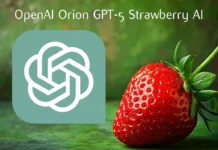Artificial Intelligence (AI) continues to push technology’s boundaries. One of its most notable advancements is AI-powered language models. These models, which can understand and generate human language, have significantly impacted sectors from technology to healthcare. This article explores advancements in AI-powered language models, their applications, and their future potential.
Understanding AI-Powered Language Models
AI-powered language models are algorithms that use deep learning techniques to process and generate human language. They are trained on vast datasets containing text from books, articles, websites, and other sources. This training allows them to understand context, grammar, and semantics, enabling them to generate coherent and contextually appropriate responses.
One of the most well-known AI language models is OpenAI’s GPT-3 (Generative Pre-trained Transformer 3). With 175 billion parameters, GPT-3 can perform a wide range of language tasks, including translation, summarization, question-answering, and content creation. The model’s ability to generate human-like text has opened up numerous possibilities across different industries.
Advancements in AI-Powered Language Models
The advancements in AI-powered language models have been rapid and impressive. Here are some key developments:
- Increased Model Size and Complexity:
- Early models like GPT-2 had around 1.5 billion parameters. The leap to GPT-3’s 175 billion parameters marked a significant advancement in the field. Larger models can capture more nuances in language, making their outputs more accurate and contextually relevant.
- Improved Training Techniques:
- Techniques such as transfer learning and fine-tuning have enhanced the performance of language models. Transfer learning allows models to leverage knowledge gained from one task to improve performance on another, while fine-tuning tailors models to specific tasks or domains.
- Enhanced Multilingual Capabilities:
- Modern language models are increasingly capable of understanding and generating text in multiple languages. This multilingual capability has broad implications for global communication and collaboration.
- Better Handling of Context and Coherence:
- Advances in model architecture and training data have improved language models’ ability to maintain context and coherence over longer text spans. This development is crucial for applications like long-form content generation and conversational AI.
Applications of AI-Driven Language Technology
AI-driven language technology has a broad range of uses, revolutionizing various sectors:
- Content Creation and Editing:
- Language models can generate articles, blog posts, and marketing content, saving time and resources for writers and marketers. Tools like Jasper (formerly Jarvis) leverage AI to assist in creating high-quality content quickly.
- In editing, models can provide grammar and style suggestions, helping writers improve their work.
- Customer Support:
- Chatbots powered by AI language models can handle customer inquiries, provide support, and resolve issues efficiently. These bots can understand and respond to a wide range of questions, improving customer satisfaction and reducing the workload on human agents.
- Translation Services:
- AI language models enhance translation services by providing more accurate and contextually appropriate translations. Services like Google Translate have become more reliable due to advancements in language modeling.
- Healthcare:
- In healthcare, language models assist in various tasks, such as analyzing patient records, providing medical recommendations, and supporting diagnostic processes. They can help streamline administrative tasks and improve patient care.
- Education:
- AI-powered language models support personalized learning by generating customized educational content and providing instant feedback on assignments. They can also assist in language learning by offering practice exercises and conversational practice.
- Legal and Financial Services:
- In the legal sector, language models help draft and review documents, conduct legal research, and provide case summaries. In finance, they analyze reports, generate market insights, and assist in financial planning.
Future Potential and Challenges
The future potential of AI-powered language models is immense. As models become more advanced, their applications will continue to expand, offering new ways to enhance productivity and improve services across various sectors. However, several challenges need to be addressed:
- Ethical and Bias Concerns:
- AI language models can perpetuate biases present in their training data, leading to biased or unfair outputs. Ensuring fairness and ethical use of these models is crucial.
- Data Privacy:
- The use of large datasets for training raises concerns about data privacy and security. It is essential to establish guidelines and practices to protect sensitive information.
- Interpretability and Transparency:
- Understanding how language models make decisions is challenging due to their complexity. Improving interpretability and transparency is necessary to build trust and ensure responsible use.
- Dependence on High-Quality Data:
- The performance of language models depends on the quality of their training data. Ensuring access to diverse and high-quality data is vital for the development of robust models.
Conclusion
AI-powered language models represent a significant leap in AI technology, offering transformative potential across numerous industries. From content creation and customer support to healthcare and education, these models are revolutionizing how we interact with technology and each other. As we continue to advance and address the associated challenges, the future of AI-powered language models looks promising, paving the way for even more innovative applications and improvements in our daily lives.
For further insights into the latest advancements in AI, stay tuned to our series on AI news and technologies.



